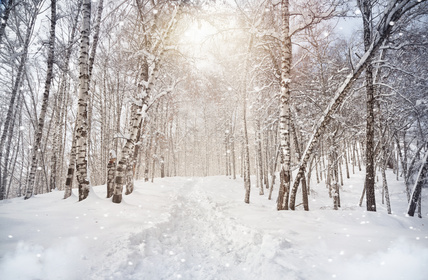Categories
Calendars
Guides
Reviews
Archive
Gallery
Articles
Ask Our Gardening Expert
Beginner's Corner >
Frost Protection
Even the toughest plants are vulnerable to frost, especially after new, tender growth has been produced in spring. A late spring frost can be more damaging to plants than extreme cold in winter and gardeners in areas where this may happen must be especially vigilant. Plants at greatest risk are trees, shrubs and climbers which have not produced hard, woody tissue. Frozen cell sap expands when it freezes and thaws, destroying the cell walls.

Some areas may be particularly prone to frost and it is good to be aware and to look out for signs when buying a property and thinking about gardening. The garden may not be as an important factor in choice of home so it will be wise to garden within the limits of the site.
Cold air is denser, therefore heavier than warm air and will move downhill on sloping ground, accumulating in hollows and valleys which become ‘frost pockets’. Barriers formed by walls, well established trees or hedges obstruct this downward flow of cold air forming a frost pocket in front. The problem may be overcome by removing the barrier or by planting frost-tender plants in rows downhill to encourage the flow of cold air.
There are many strategies that gardeners can use to avoid the worst effects of frost. Avoid placing tender plants in frost pockets, placing them in front of a sunny wall or on a sunny bank. Plant tender seedlings, bulbs and tubers later in spring and avoid feeding plants early to encourage soft, new growth too early. Allow the tops of herbaceous perennials to die down, leaving them to protect the tender crowns that appear in spring. Place raked-up leaves from autumn over herbaceous borders for more protection. Newspapers can also be used. If there are only a small number of plants needing protection, cover each with a cloche or a ‘frost cloth’. A cardboard box will do as well.
Should frost strike unexpectedly and you are unprepared, a garden hose or sprinkler used gently over vulnerable plants works well. Commercial orchards are often equipped with sprinkler systems like this, as well as rotor blades to keep the air moving.